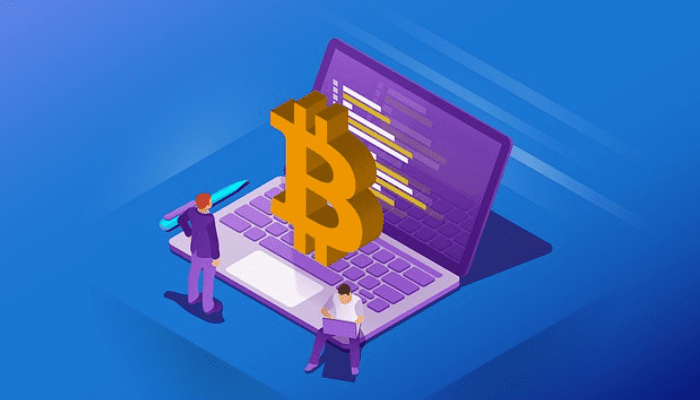For Bitcoin to become a full-fledged alternative to traditional currencies, it has to widen its scalability. Since the existence of it, bitcoin has only been able to carry out seven transactions per second. But people are trading bitcoins through https://bitcoinstorm.io/, and with its adoption by several entities lately, the system is becoming congested. A Visa makes an average of 24,000 transactions per second and can increase it to 50,000.
The Lightning Network is a second layer added to Bitcoin’s blockchain. It is expected to be a game-changer in the evolution of cryptocurrencies. On that extra layer, a one-to-one channel is created between two parties, and it only exists till it is required. The transactions are expected to be instant and cost less as it is only set up between two people.
Two people need to create a multi-signature wallet to set up a channel on the lightning network. They both get the right to access the wallet with their respective private keys. They both need to deposit a certain amount of bitcoin into the wallet. Post that, they are free to perform unlimited transactions. This way, the coins stored in the shared wallet keeps getting redistributed. The actual distribution of funds is highlighted in the blockchain only after the channel is closed. The algorithm tracks the most recently signed balance sheet to distribute the money between both parties. It is only after the channel is terminated that the initial amount and final balance are broadcast to the main blockchain.
Lightning Network has open doors to new types of attacks. The technology is still under development, and the lofty expectations are yet to be met.
Problems with Lightning Network
1) Not an ultimate solution to Bitcoin’s transaction fee problem
Lightning Network has been advertised as a solution to the high transaction fees. It was designed keeping in mind that rising fees is one of the direct results of bitcoin’s congested network. The plan was to create this extra layer to take the load off the main blockchain.
But this turned out to be a misinterpretation. The transaction fees are not only affected by the clogged network. Instead, the fees became a massive component of the Lightning Network’s overall cost.
The total cost incurred to utilize this technology can be divided into two parts. Simultaneously, opening and closing channels between two parties, the fee charged is equivalent to bitcoin’s transaction fees. When payments are transferred within the channel, a separate routing fee will be deducted. The routing is currently set to zero as the network is still developing, and only a few nodes are using it. Thaddeus Dryja, the co-writer of the original white paper, has anticipated that the routing fee will be kept low for quite some time as the network is still scalable.
2) Remaining online for long exposes Nodes to Attack.
It is obligatory to keep the nodes on bitcoin’s Lightning Network online all the time. Only that way one can send and receive payments. Even though cold storage of coins is the safest method of storing, this network doesn’t allow that. This requirement makes the network prone to hack and theft.
Going offline has its downsides on the Lightning Network. This technology is still vulnerable to some loopholes. The design makes it possible for one of the two parties from a channel to take away the funds while the other is out. This theft is known as Fraudulent Channel Close. There are ways to object to the closing of a channel within a period. However, the prolonged absence of one party can lead to the expiration of that period.
What makes this network so rigid is the increased centralization, resulting from concentrating funds in only specific nodes within the network. If any node goes offline, the user’s fund is locked up. Also, as every node is connected, one server outrage can result in disruption across the network. This means a large number of users have to face inconvenience as their funds will get frozen too.
3) It is not a solution to Bitcoin’s Network Effects Problem.
The Lightning Network’s introduction was also expected to boost bitcoin’s probability of becoming a medium of daily transaction. The concept was to make it easier for customers to make fast payments to businesses through a payment channel. A channel makes it easier to connect with people they are transacting with every day, like their landlord or e-commerce stores.
However, these mainstream transactions are still a distant dream. Recent months have seen a surge in trading volumes. But, the lightning network’s effect on reducing the fees can only be analyzed when the number of transactions reaches its full potential.
Even if the network succeeds in speeding up transactions, the question of how it will be widely used in Bitcoin remains. It’s no news that Bitcoin’s volatility is its biggest speed breaker. Having knowledge about it, people are less likely to save their rent money in bitcoins.
Probable attacks on Bitcoin’s Lightning Network
1) Griefing
Lightning channels use a cryptographic function called hash time lock contracts (HTLCs) to execute transactions. There are possibilities of getting maxed out, after which no payments can be processed, blocking all the funds, and the channel must be closed.
An attacker can freeze bitcoins on any power channel by spamming with micropayments. This attack will not allow him to fund another user yet but may be used to the detriment of paying the competitor’s eligibility route.
2) Flood and Loot
This can become a common threat as it is easy to carry out. An attacker can open a channel with the victim and then forward the payments to another node controlled by him. He can refuse to accept that payments were received. He might use codes to close all the channels at the same time.
The trick lies in closing all the channels simultaneously so that when all the channels broadcasted to the on-chain Bitcoin addresses, some of the closing transactions are bound to fail. When it is on the waitlist, the attacker broadcasts his trades on the blockchain to claim the funds with a higher fee. It’s blackmailing a victim into resolving the issue in return for extra costs.
3) Time-dilation eclipse
It can also be referred to as the “Sybil attack.” An attacker uses multiple identities to confuse the network. It harms nodes that serve light clients. They use lightning wallets, which require only minimum data to function.
The attacker can decide to block hundreds of nodes with fake identities. He uses up the nodes so that victims are no longer connected to an honest user. It becomes effortless for the attacker to isolate a node so that data from an entire network cannot reach it.
Once the nodes are ‘eclipsed,’ the attacker deliberately feeds transaction data to the node at a prolonged rate. He can suddenly close the Lightning channel with the victim and steal funds. The host node will not be aware of the channel’s closing transaction because it is now slowed down as the attacker was not providing data quickly enough.
4) Pinning
An attacker can block a channel’s closing transaction by broadcasting contradicting mem pools. Mempool is a place for storing all valid transactions until the Bitcoin network confirms them.
The biggest problem with blockchain technology is that no uniform pool can store pending transactions. There are only two ways, either the nodes receive transactions, or they don’t. Whether the process will be smooth depends on how peer-to-peer network connections are distributed. No mem pool is the same.
The attacker intends to set a low fee on a closing transaction enough not to get confirmation before the timelock of the channel expires. This leads to improper closing of the victim’s channel so that funds can be stolen.
For using a Lightning Network, one must be an advanced user. It gives users more control, mostly the miners, who are in the power of the main Bitcoin blockchain—very efficient and expensive equipment for miners to maintain the network. Lightning Network makes the process of the transaction more viable by ordinary people. You can get access to it with any laptop or home PC. The goal of Bitcoin is to become a mainstream payment method that can be achieved through Lightning Network.
However, there are security issues that need a better design for it to reach its full potential.
The lightning network has emerged as a concept that can change the future of Bitcoin. If bitcoin is to become a day-to-day “means of exchange,” Lightning Network with a few improvisations is the best solution to that.



































